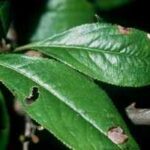Some of the winter flowers that we enjoy are not really flowers but are berries. These berries are growing on the holly bush and are mostly affiliated with Christmas. Most of the time we think of the holly bush or shrub as having shiny dark green leaves that are very spiky and have red berries.
The holly bushes that we are most familiar with are generally used for decorating at Christmas time. There are about 600 species of different holly trees and holly bushes. They range from a small 6 inch dwarf bush to a 70 foot tree. Their leaves are spined or spineless; the colors from dark green to light green and some of the leaves are variegated. The holly bush berries come in other colors besides red such as orange, yellow, or black. Some of them are deciduous and others are evergreen.
They are found in almost every area of the world. Unfortunately the growing conditions in Antarctica and Australia are far too much for holly to handle. There are species found in South America, Europe, Asia, Africa and North America. There are over 200 species of holly bushes native to China alone, but the majority of species are in the sub-tropical regions of Asia and the Americas.
If you are looking for privacy plant a hedge of holly bushes, this will keep people from looking in and provide you with a scenic view at the same time. If you want shade, an English holly tree might be just what you need but they will need plenty of room for they will get very large. Their root system is very extensive so they should be planted well away from underground cables and pipes. They will make good privasy screens. The evergreen species, the ones with the bright red berries, provide some color in any winter garden.
Holly bushes will also attract wildlife to your garden. They will provide the birds’ shelter and protection from their predators. The thorns or spiky leaves on most holly shrubs are quite helpful in many ways. Many songbirds hide under the branches for protection from predators; the thorns will keep their enemies away. The holly bush berries will supply food for both wild animals and the birds. Wild turkeys and other fruit eaters may come for a visit such as the opossum, mice and raccoons. The holly leaves are also eaten in the winter by herbivores. The thorns of the holly bush will not harm the mouths of these creatures while chewing.
Holly bushes are dioecious plants, which mean they are either male or female. If you have female plants and want them to produce berries they must be within 30 feet of a male plant. The male plant pollinates branches of the female and will produce berries every year. If you only have plants of the same sex you will still have healthy plants you just will not have berries.
With a little holly bush care you should end up with a healthy garden species. They like full sun best, but some species that like shade. Holly shrubs prefer an acidic soil with lots of organic matter and drainage. Some species of holly will not be able to handle cold winters where others love it. The time to prune your holly bushes is during fall or winter. Their branches need that trimming for new growth in the spring and also help to grow thicker foliage.






